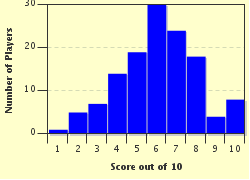Quiz Answer Key and Fun Facts
1. Which of the following Republicans was NOT one of the many candidates Donald Trump defeated to win the Republican nomination in 2016?
2. Former Secretary of State Hillary Clinton was expected easily to win the Democratic nomination, but she faced an unexpectedly tough challenge from Independent/Democratic Vermont Senator Bernie Sanders. Which group of Democratic base voters overwhelmingly supported Sanders over Clinton during the primary?
3. In a long campaign of controversies and scandals involving both Donald Trump and Hillary Clinton, Trump caused even more controversy during the third and final presidential debate. Which of the following is NOT something he said during that debate?
4. On Election Day, Hillary Clinton, despite being the strong media favorite, unexpectedly lost to Donald Trump. Which of the following states was widely expected to back Clinton but actually wound up going to Trump when the results were tallied?
5. About one third of the U.S. Senate was also up for election along with the presidency. How many states split their vote, by voting for one party for President and the other for Senator?
6. True or False: For the first time in history, Democrats gained seats in both houses of Congress despite losing the presidency.
7. Percentage-wise, which US state had the closest result for the presidency in 2016?
8. Which of the following was NOT a reason commonly given for Hillary Clinton's surprise defeat in the election?
9. Which of the following people received electoral votes for president once said votes were cast by electors and counted by Congress?
10. Which states/districts provided the largest percentage win for Hillary Clinton and Donald Trump respectively?
Source: Author
Joepetz
This quiz was reviewed by FunTrivia editor
stedman before going online.
Any errors found in FunTrivia content are routinely corrected through our feedback system.

